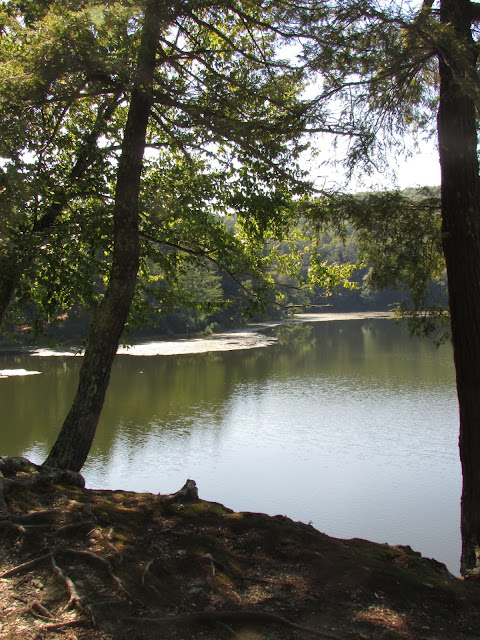
I have been digging around in the archives and came up with some great photos of a trip I took to see The World Garden at Lullingstone Castle in Kent, England. The garden is arranged by continent, planted with flora indigenous to each place. It is a plant collectors garden, but really beautifully arranged, not in the standard plant, place, plant, place kind of way; it felt much more meandering, intermingled, and wild. It is the collection and design of Tom Hart Dyke, a plant hunter to the max, who even survived a kidnapping while on an expedition through the Darien Gap in Panama. While held captive, Tom Hart Dyke dreamed up his World Garden scheme. After his release he settled back at his family home (of 20 generations) at Lullingston Castle and started to layout the garden.
I happened to be in England during a heat wave, which is apparently not normal, and so the day was very hot. The garden is walled in too, which helps give heat loving plants a better chance at thriving and surviving the typically mild and wet climate of England. It was impressive to see how many desert type plants seemed to thrive in The World Garden. It is a gardener's enigma to always be pushing zones and climates, and inspiring to see what can be made to survive by manipulating soil structure, drainage, and protection.
Dianthus carthusianorum
One of my favorite plants, little bright pink spiky flowers on very slender upright stems. I always want it to have more impact and punch, but I still just love its wispy ways.
The frothy white blooms belong to Buddleja loricata, or the South African Butterfly Bush. I am normally not a huge fan of the butterfly bush, but this one was stunning. It was covered in open and airy gray-white blooms and each floret had a small yellow center. Planted en masse, it was just beautiful. Unfortunately for me it is hardy to zone 7, so I have no plans to plant it here in Vermont.
Close up of Buddleja loricata
There was a glasshouse with a few different micro ecosystems. Here a gorgeous cactus in bloom and below the tallest Echium I have ever seen, reaching all the way to the ceiling. I regret not photographing the castle itself- it is dreamy- as well as the surrounding countryside. The place is surrounded by open fields and forests and there is a walking path that runs along a stream for quite a long way. It is a place that you could spend an entire day wandering the gardens and hillsides.
http://www.lullingstonecastle.co.uk/thegarden.html
http://www.lullingstonecastle.co.uk/thegarden.html























